| Listing 1 - 10 of 74 | << page >> |
Sort by
|
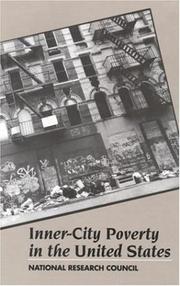
ISBN: 0309042798 9786610212378 1280212373 0309543495 0585144486 9780585144481 9780309042796 9781280212376 6610212376 9780309543491 Year: 1990 Publisher: Washington, D.C. : National Academy Press,
Abstract | Keywords | Export | Availability | Bookmark
 Loading...
Loading...Choose an application
- Reference Manager
- EndNote
- RefWorks (Direct export to RefWorks)
Documents the growth of concentrated poverty in central cities of the United States and examines what is known about its causes and effects. This volume is useful for policymakers, program administrators, researchers studying urban poverty issues, faculty, and students.
Urban poor --- Inner cities --- Government policy --- Central cities --- Ghettos, Inner city --- Inner city ghettos --- Inner city problems --- Zones of transitions --- Cities and towns --- Urban cores --- City dwellers --- Poor --- United States
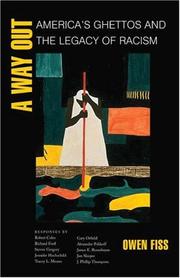
ISBN: 1282158074 9786612158070 1400825512 9781400825516 9780691088815 0691088810 0691088810 9781282158078 Year: 2003 Publisher: Princeton, N.J. : Princeton University Press,
Abstract | Keywords | Export | Availability | Bookmark
 Loading...
Loading...Choose an application
- Reference Manager
- EndNote
- RefWorks (Direct export to RefWorks)
After decades of hand-wringing and well-intentioned efforts to improve inner cities, ghettos remain places of degrading poverty with few jobs, much crime, failing schools, and dilapidated housing. Stepping around fruitless arguments over whether or not ghettos are dysfunctional communities that exacerbate poverty, and beyond modest proposals to ameliorate their problems, one of America's leading experts on civil rights gives us a stunning but commonsensical solution: give residents the means to leave. Inner cities, writes Owen Fiss, are structures of subordination. The only way to end the poverty they transmit across generations is to help people move out of them--and into neighborhoods with higher employment rates and decent schools. Based on programs tried successfully in Chicago and elsewhere, Fiss's proposal is for a provocative national policy initiative that would give inner-city residents rent vouchers so they can move to better neighborhoods. This would end at last the informal segregation, by race and income, of our metropolitan regions. Given the government's role in creating and maintaining segregation, Fiss argues, justice demands no less than such sweeping federal action. To sample the heated controversy that Fiss's ideas will ignite, the book includes ten responses from scholars, journalists, and practicing lawyers. Some endorse Fiss's proposal in general terms but take issue with particulars. Others concur with his diagnosis of the problem but argue that his policy response is wrongheaded. Still others accuse Fiss of underestimating the internal strength of inner-city communities as well as the hostility of white suburbs. Fiss's bold views should set off a debate that will help shape urban social policy into the foreseeable future. It is indispensable reading for anyone interested in social justice, domestic policy, or the fate of our cities.
Occupational mobility --- Urban poor --- Inner cities --- Social problems --- City dwellers --- Poor --- Central cities --- Ghettos, Inner city --- Inner city ghettos --- Inner city problems --- Zones of transitions --- Cities and towns --- Urban cores --- Government policy
Book
ISBN: 067497462X 0674974646 9780674974647 9780674970502 0674970500 9780674984073 0674984072 Year: 2017 Publisher: Cambridge, MA : Harvard University Press,
Abstract | Keywords | Export | Availability | Bookmark
 Loading...
Loading...Choose an application
- Reference Manager
- EndNote
- RefWorks (Direct export to RefWorks)
Why do American ghettos persist? Decades after Moynihan’s report on the black family and the Kerner Commission’s investigations of urban disorders, deeply disadvantaged black communities remain a disturbing reality. Scholars and commentators today often identify some factor—such as single motherhood, joblessness, or violent street crime—as the key to solving the problem and recommend policies accordingly. But, Tommie Shelby argues, these attempts to “fix” ghettos or “help” their poor inhabitants ignore fundamental questions of justice and fail to see the urban poor as moral agents responding to injustice. Drawing on liberal-egalitarian philosophy and informed by leading social science research, Dark Ghettos examines the thorny questions of political morality raised by ghettos. Should government foster integrated neighborhoods? If a “culture of poverty” exists, what interventions are justified? Should single parenthood be avoided or deterred? Is voluntary nonwork or crime an acceptable mode of dissent? How should a criminal justice system treat the oppressed? Shelby offers practical answers, framed in terms of what justice requires of both a government and its citizens, and he views the oppressed as allies in the fight for a society that warrants everyone’s allegiance. “The ghetto is not ‘their’ problem but ours, privileged and disadvantaged alike,” Shelby writes. The existence of ghettos is evidence that our society is marred by structural injustices that demand immediate rectification. Dark Ghettos advances a social vision and political ethics that calls for putting the abolition of ghettos at the center of reform.
Inner cities --- Social justice --- Racism in public welfare --- African Americans --- Central cities --- Ghettos, Inner city --- Inner city ghettos --- Inner city problems --- Zones of transitions --- Cities and towns --- Urban cores --- Welfare racism --- Public welfare --- Social conditions. --- Government policy
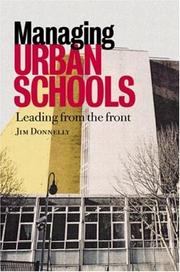
ISBN: 1138421200 1135725012 1280075090 020341683X 9780203416839 0749438681 Year: 2003 Publisher: London ; Sterling, VA : Kogan Page,
Abstract | Keywords | Export | Availability | Bookmark
 Loading...
Loading...Choose an application
- Reference Manager
- EndNote
- RefWorks (Direct export to RefWorks)
This work makes a contribution to the understanding of how urban and city schools need to operate and how they need to be led. Headteachers and Deputies, those studying for the NPQH, and all aspirant school leaders should find this text useful in.
Urban schools --- Education, Urban --- School management and organization --- Inner city education --- Urban education --- Cities and towns --- Urban policy --- Inner city schools --- City schools --- Schools --- Administration. --- Social aspects
Book
ISBN: 1617356379 9781617356377 9781617356360 1617356360 9781617356353 1617356352 Year: 2011 Publisher: Charlotte, N.C. : Information Age Pub., Inc.,
Abstract | Keywords | Export | Availability | Bookmark
 Loading...
Loading...Choose an application
- Reference Manager
- EndNote
- RefWorks (Direct export to RefWorks)
Plaintext description.
Urban schools --- Education, Urban --- Educational change --- School improvement programs --- Inner city schools --- City schools --- Schools
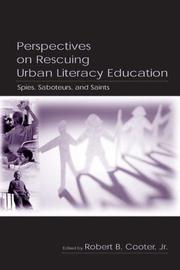
ISBN: 1410609472 9781410609472 9780805842906 080584290X 0805842896 080584290X 9780805842890 9781135632144 1135632146 9781135632182 1135632189 9781135632199 1135632197 Year: 2004 Publisher: Mahwah, N.J. : L. Erlbaum,
Abstract | Keywords | Export | Availability | Bookmark
 Loading...
Loading...Choose an application
- Reference Manager
- EndNote
- RefWorks (Direct export to RefWorks)
Perspectives on Rescuing Urban Literacy Education: Spies, Saboteurs, and Saints is an exploration of the variables that contribute to the improvement of literacy instruction in large urban school districts. The book grows out of a five-year initiative known as The Dallas Reading Plan--a 50 million collaborative effort between area business and corporate interests, philanthropy, and the Dallas Independent School District. Audiences include university professors and graduate students in reading/literacy education, educational leadership, special education, urban studies, and chan
Education, Urban --- Language arts --- Communication arts --- Communication --- Inner city education --- Urban education --- Cities and towns --- Urban policy --- Study and teaching
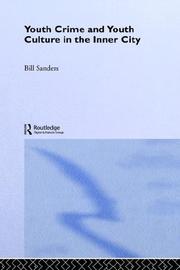
ISBN: 1134256035 1280106921 0203001664 0415355036 9780203001660 9780415355032 9781134256037 9781134255986 1134255985 9781134256020 1134256027 9780415439756 0415439752 9781280106927 Year: 2005 Publisher: London : Routledge,
Abstract | Keywords | Export | Availability | Bookmark
 Loading...
Loading...Choose an application
- Reference Manager
- EndNote
- RefWorks (Direct export to RefWorks)
Youth Crime and Youth Culture in the Inner City offers an interpretive account of juvenile delinquency within the modern inner city, an environment which is characterized by a long history of social deprivation and high rates of crime. A wide range of topics are explored, such as young people's motivation for, frequency of, and attitudes towards, a variety of illegal behaviors, such as street robbery, burglary, theft, drug use, drug selling and violence. Why do young people commit these offences? Who do they commit them against? How do they feel afterwards? This book attempts to answe
Juvenile delinquents --- Criminal behavior --- Deviant behavior --- Inner cities --- Attitudes. --- Central cities --- Ghettos, Inner city --- Inner city ghettos --- Inner city problems --- Zones of transitions --- Deviancy --- Social deviance --- Delinquents --- Delinquents, Juvenile --- Juvenile offenders --- Offenders, Juvenile --- Offenders, Youthful --- Young offenders --- Youthful offenders --- Cities and towns --- Urban cores --- Human behavior --- Conformity --- Social adjustment --- Criminal psychology --- Criminals --- Youth --- Attitudes
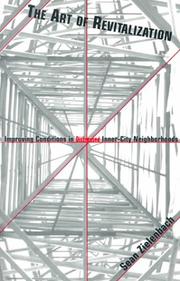
ISBN: 0815335989 9780203904251 0203904257 0203904265 9780203904268 9780815335979 0815335970 9780815335986 0815335970 9786610407330 6610407339 1135577455 9781135577452 1280407336 9781280407338 9781135577407 9781135577445 1135577447 Year: 2000 Publisher: New York : Garland,
Abstract | Keywords | Export | Availability | Bookmark
 Loading...
Loading...Choose an application
- Reference Manager
- EndNote
- RefWorks (Direct export to RefWorks)
This book discusses the revitalization of decayed inner-city neighborhoods. It explores the role of social capital in stabilizing and turning around distressed communities, and it highlights the roles that local actors can and do play in the revitalization process.The Art of Revitalization takes two Chicago neighborhoods, Englewood and North Lawndale, as case studies. Zielenbach discusses them in the context of racial change and urban decay in Chicago since World War II. The account of the changing neighborhoods is fascinating and clear, and the strength of the author's portray
Urban renewal --- Community development, Urban --- Inner cities --- Central cities --- Ghettos, Inner city --- Inner city ghettos --- Inner city problems --- Zones of transitions --- Cities and towns --- Urban cores --- Community programs, Urban --- Neighborhood improvement programs --- Urban community development --- Urban economic development --- City planning --- Sociology, Urban --- Urban policy --- Citizen participation --- Government policy --- Social aspects --- RENOUVEAU URBAIN --- U.S.A. --- DEVELOPPEMENT COMMUNAUTAIRE URBAIN --- REVITALISATION --- GEOGRAPHIE HUMAINE --- ILLINOIS --- CHICAGO
Book
ISBN: 0791477312 1435695747 9781435695740 0791476499 9780791476499 9780791477311 Year: 2008 Publisher: Albany : SUNY Press,
Abstract | Keywords | Export | Availability | Bookmark
 Loading...
Loading...Choose an application
- Reference Manager
- EndNote
- RefWorks (Direct export to RefWorks)
Combining a detailed case study of Chicago's Cabrini Green urban revitalization project with the concerns of modern political philosophy and rhetorical education, David Fleming examines the relationship between public discourse and the built environment in the contemporary United States. For more than half a century, low-income African American residents of the Cabrini Green public housing project have struggled against the extreme spatial inequality of their metropolitan region. The author examines three different options considered as part of revitalization efforts for the neighborhood: the dispersal of the project's residents into the largely white suburbs of Chicago; the building of a low-rise, mixed-income "urban village" on the same site; and the conversion of one of the original buildings into a democratically governed, not-for-profit housing cooperative.The author argues that each of these projects involves imagining the physical, socioeconomic, and rhetorical community of the contemporary city in dramatically different ways. Considered together, the projects provide evidence that places still matter in human flourishing, but show that the places of our contemporary landscape are unequal in resources and opportunities, and that our public philosophies support this inequality. Fleming reminds us, however, that these arrangements are plastic and can be redesigned to reflect a more equitable sharing of public problems and resources.
Urban renewal --- Community development, Urban --- Inner cities --- Central cities --- Ghettos, Inner city --- Inner city ghettos --- Inner city problems --- Zones of transitions --- Cities and towns --- Urban cores --- Community programs, Urban --- Neighborhood improvement programs --- Urban community development --- Urban economic development --- City planning --- Sociology, Urban --- Urban policy --- Citizen participation --- Government policy --- Social aspects
Book
ISBN: 0585078718 9780585078717 1438413475 Year: 1990 Publisher: Albany : State University of New York Press,
Abstract | Keywords | Export | Availability | Bookmark
 Loading...
Loading...Choose an application
- Reference Manager
- EndNote
- RefWorks (Direct export to RefWorks)
Urban renewal --- Inner cities --- Relocation (Housing) --- African Americans --- Afro-Americans --- Black Americans --- Colored people (United States) --- Negroes --- Africans --- Ethnology --- Blacks --- Housing --- Slums --- Central cities --- Ghettos, Inner city --- Inner city ghettos --- Inner city problems --- Zones of transitions --- Cities and towns --- Urban cores --- Model cities --- Renewal, Urban --- Urban redevelopment --- Urban renewal projects --- City planning --- Land use, Urban --- Urban policy --- Case studies. --- Social conditions --- Black people
| Listing 1 - 10 of 74 | << page >> |
Sort by
|

 Search
Search Feedback
Feedback About UniCat
About UniCat  Help
Help News
News